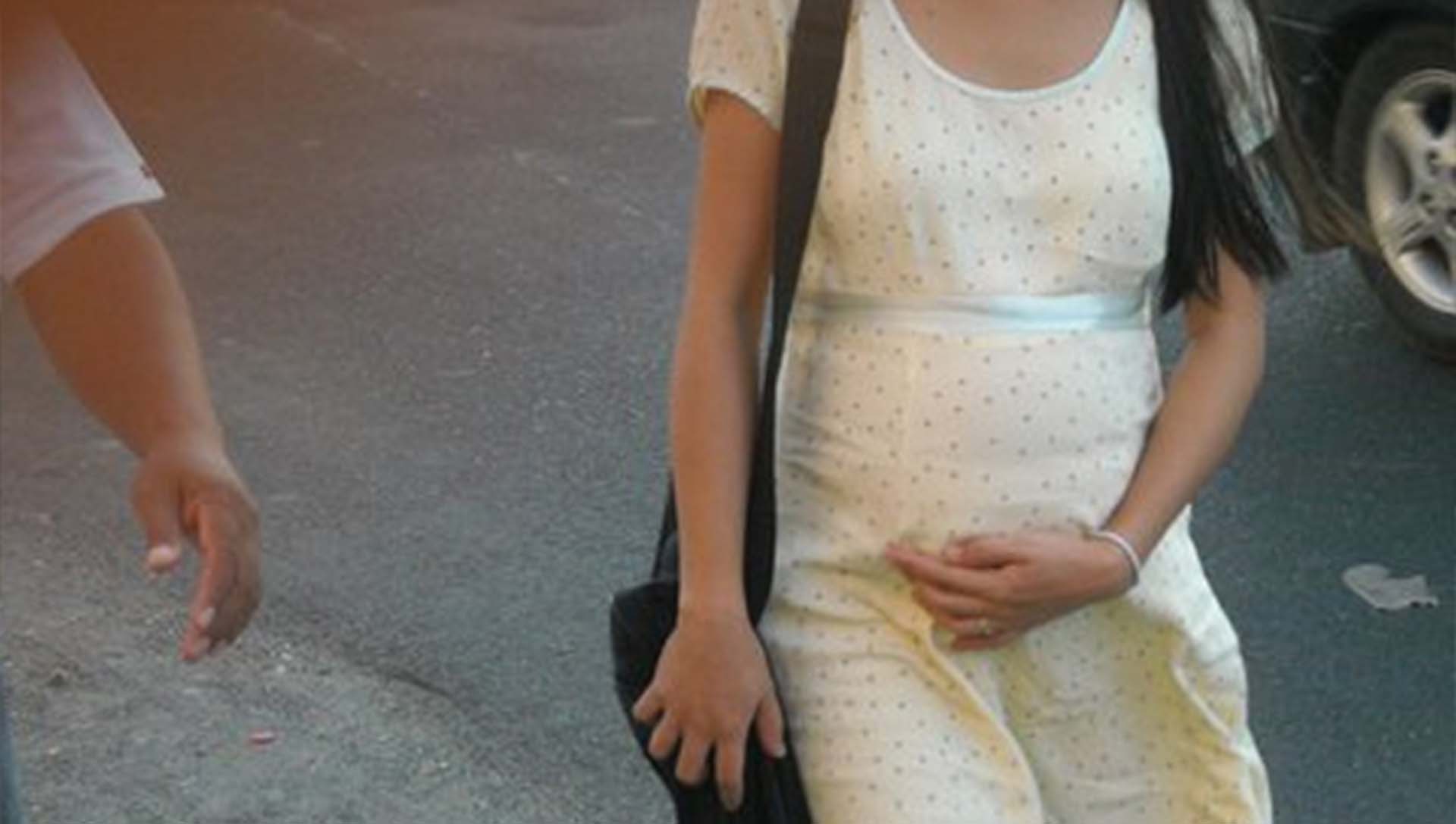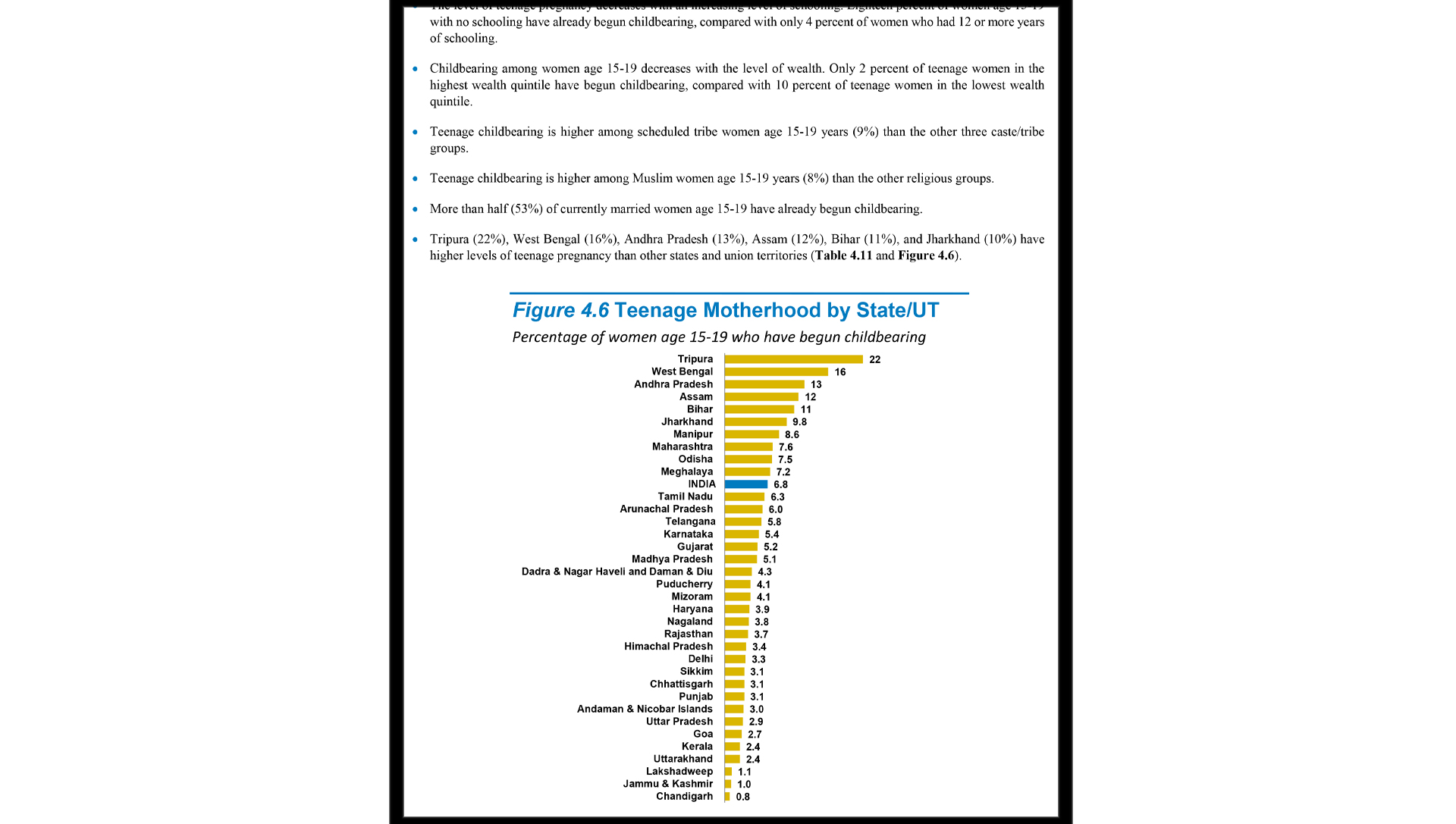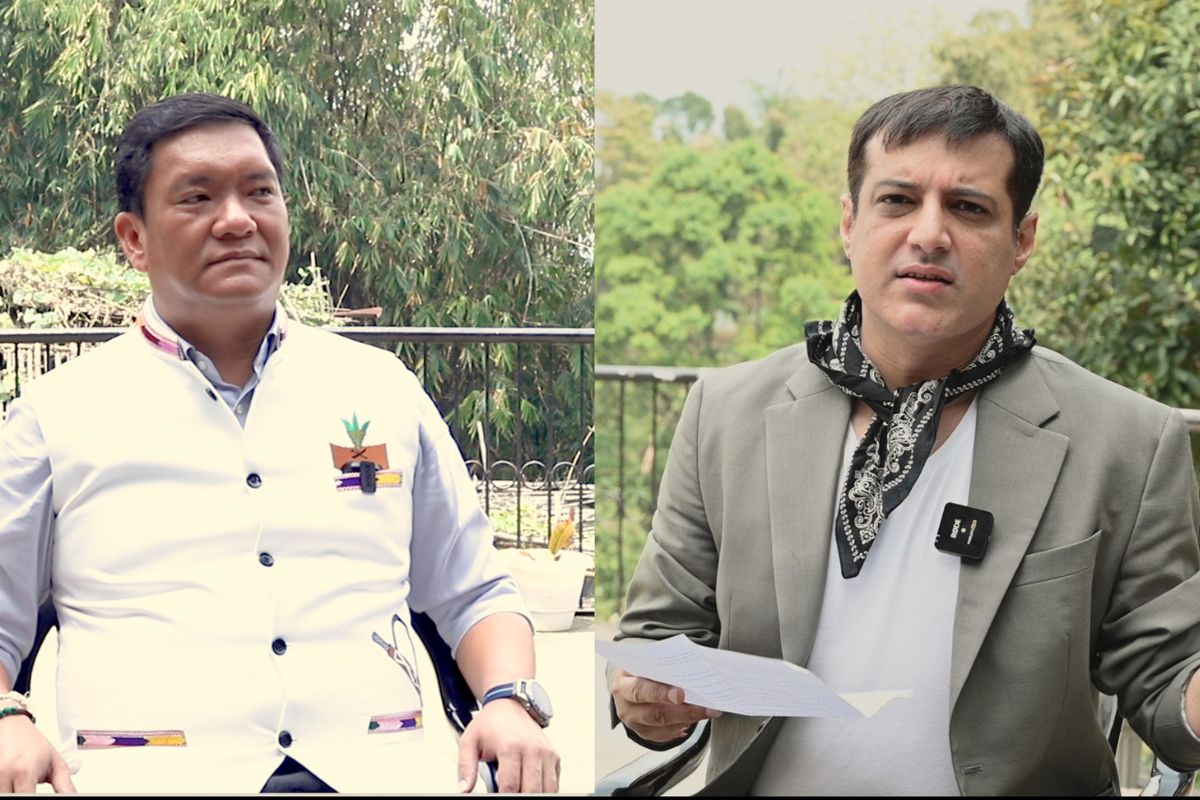


NEW DELHI: Guidance available for young teenagers on informed decisions and good sexual health through school education may have dropped India’s teen pregnancy by a marginal 1 per cent, from six years ago, but conception among girls in Indian Muslim families has been reported at an alarming 8% rate, higher than any other religion in the country.
These disclosures are part of the 2019-21 National Family Health Survey (NFHS-5), released this week.
Overall 1.9 lakh girls between 15-19 age were found to have gone through teen pregnancy in a survey done during the two-year period including the COVID-induced pandemic. Of them, 97,827 girls were Hindus while 19,410 were Muslims.
While 6.5% Hindu teen girls were found to be pregnant, Muslim teens, at 8.4%, pipped girls of the same age from other religions while becoming pregnant, the NHFS said.
Christians and Sikh girls saw the teen pregnancy at 6.8% and 2.8% respectively.
NFHS fieldwork for India was conducted in two phases. Phase-I ran from June 2019 to January 2020 covering 17 states and 5 UTs and Phase II from January 2020 to April 2021 covering 11 states and 3 UTs. 17 field agencies were used to gather information from 6.3 lakh households covering 7.2 lakh women and 1.01 lakh men. The earlier NFHS survey was released in 2016.
“Teenage childbearing declined from eight percent in 2015-16 to seven percent in 2019-21,” the NHFS report has said while praising the increase in school education has directly impacted the decrease in teenage child bearing.
The NFHS survey also shows that COVID-induced pandemic and measures have clearly had very different impacts on the reproductive choices of women of different states, caste and backgrounds.

The report has put Tripura and West Bengal, ahead of any other part of India, in the trend of early pregnancy among young teen girls.
Tripura and WB have reported 22 % and 16 % pregnancy in the girls of this age group. Andhra Pradesh, Assam and Bihar follow next at 13, 12 and 11 per cents.
“Overall, seven percent of women aged 15 to 19 in India during 2019-21 went on to bear a child, five percent of have had live birth whereas two percent of women are pregnant with their first child,” the report adds.
Also, 18 % of girls, between 15-19, who reported pregnancy, had no schooling, only four % had completed 12 or more years of schooling.
NHFS survey however has also counted wealth as one of the major factor behind childbearing.
“Only 2 percent of teenage women in the highest wealth quintile have begun childbearing, compared with 10 percent of teenage women in the lowest wealth quintile,” the survey said.
NFHS has said teenage childbearing is higher among scheduled tribe women at 9 % rate than other castes. This, even though more teen girls from OBCs, at 53, 755 were pregnant than SCs (28,204) and STs ( 11,691).
The report has put the spotlight on rural areas which continues to see higher number of cases than urban areas, suggesting that access to education is needed to control unsafe and unprotected sex.
The union territories of Chandigarh (0.8%), Jammu & Kashmir (1.0), Lakshwadeep (1.1%) have reported a very low teenage pregnancy. Uttarakhand is the only state in India to have less than 3 percent pregnancy for 15-19 girls
Doctors and psychiatrists are overall content with the marginal drop in the pregnancy but insist that more is needed to inform both young girls and boys on sex education.
“Education plays a pivotal role and Jammu and Kashmir scores here. Women are becoming more educated and are gradually becoming capable of taking their own decision. Also, parent’s education matters here because now a days parent takes the effort to understand their children.” Dr Suhail Naik, former president, Doctors Association Kashmir (DAK) told The New Indian.
Some experts also say stringent laws on child marriage and proposed age of 21 is leaving a positive impact on the society.
“There are two things teenage sexual relationship and teenage pregnancy. The first emphasis is that our education system is definitely growing and secondly, the marriage age is increasing whose direct consequence is decrease in teenage pregnancy,” said Dr Rajiv Mehta, Consultant Psychiatrist
Institute of Psychiatry and Behavioral Science, Sir Ganga Ram Hospital.
NFHS , that was started in 1992-93 has been since making its findings on population, health and nutrition for India, public.
